|
Four
important questions must be answered before lab space can be designed.
What do you want your students to know and be able to do? How should they
learn? What teaching and support facilities will be required? What are
the school’s priorities, and how do the desired changes fit within
them?
To
begin to explore a variety of teaching space layouts, click on the appropriate
button below to access an interactive planning tool.



A.
What do you want your students to know and be able to do?
-
Does
your school have a mission statement that identifies overall goals?
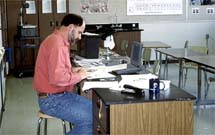
-
Have
you and your science, math, and technology education colleagues
written mission statements for your programs? Are they consistent
with the school’s mission?
-
What
is the nature of your curriculum and what changes do you foresee?
Link
to web resources
B.
How should they learn?
-
Will
an interdisciplinary teaching approach be implemented in your school?
-
To
what extent will your students be involved in individual or in group
experimentation and problem solving?
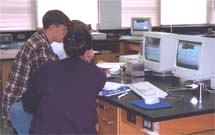
-
Will
students participate in individual or group projects?
-
Have
you and your colleagues discussed new teaching methods for science,
math, and technology education?
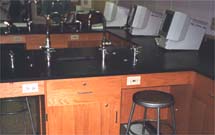
-
How
will science, math, or technology education be taught in your school
ten years from now? The same as today, or differently? What may
be the differences?
-
How
will technology be integrated into the curriculum and into the laboratory?
-
How
will computers be integrated into the curriculum and into the laboratory?
Link
to web resources
C.
What teaching and support facilities will be required?
-
What
discipline or disciplines will be taught in the space?
-
Will
fume hoods be critical to your curriculum or will your program,
by policy, limit the use of certain chemicals and experiments to
eliminate the need for hoods and waste disposal?
-
Will
desktop or laptop computers be used? How many students will share
one computer?
-
Will
lab space be shared or will each teacher be assigned his or her
lab?
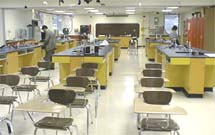
-
Should
a discussion area be provided in each lab? If so, what seating style
should be used?
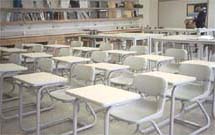
-
Should
the seating be around chalkboard or a seminar table? Should tablet
arm chairs, chair desks, or movable tables and chairs be used?
-
If
the labs are shared, will each teacher need special support space?
What other support space will be required for your program?
-
In
addition to the general purpose, discipline-specific labs, what
other teaching space will be required?
Link
to web resources
D.
What are your school’s priorities?
-
Does
your school offer courses in science, math, and technology education?
If not, is augmenting the curriculum a high priority?
-
Are
the science, math, and technology education departments expected
to either expand or decrease? Is any one area expected to change
more than another?
-
Are
these departments involved with other academic departments in interdisciplinary
teaching? Will such initiatives be encouraged in the future?
-
Does
your school sponsor academic programs that involve the community
or local industry? How does this affect the science, math, and technology
education curriculum?
-
Does
you school share resources with another school?
-
Is
you school planning any new construction or renovation? How will
this affect science, math, and technology education facilities?
Link
to web resources
E.
MAGNA Awards
Link
to web resources
The
next step in the planning process is to form a Planning
Committee.
|

